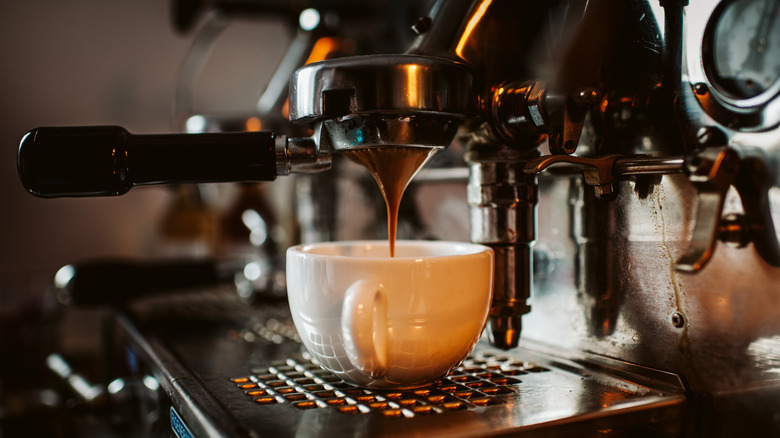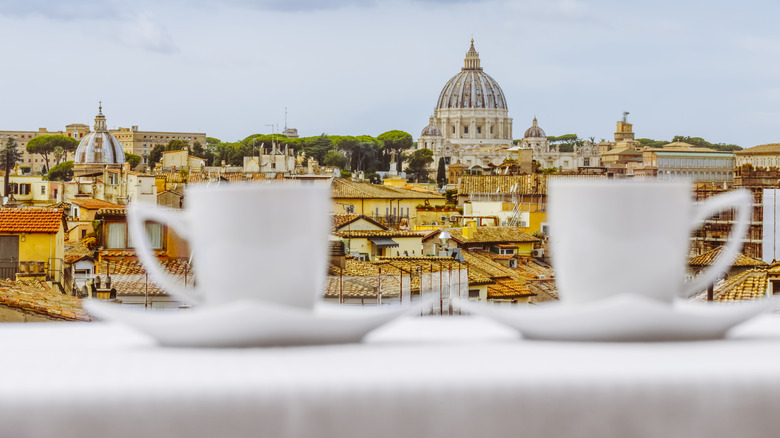Iced vanilla lattes are the pinnacle of America’s coffee culture, advancing the country’s obsession with espresso-based beverages. Americans’ daily cup of brew is essential for putting that pep to your step, while in Italy, coffee is an incomparable canvas of art. Ethiopia is widely considered the birthplace of coffee, although famous coffee destinations like Italy are commonly associated with the modern-day coffee capitals of the world.
America often follows behind, catching onto coffee trends while adding an American-style flair that strongly differentiates European and American café culture. As one of the top 10 caffeinated countries in Europe, according to Statista, Italy has a reputation for producing some of the best coffee in the world. Unsurprisingly, the creators of the espresso machine know a thing or two about crafting a quality cup of coffee — just not in the same fashion as your neighborhood café.
You most likely won’t find the same type of coffee beans, coffee cup sizes, or monikers in America that are ubiquitous in Italy. Most importantly, your favorite bottle of vanilla syrup has no place on Italian coffee shop menus. If you’ve ever tried ordering a caramel macchiato in an Italian espresso bar, you’ll be met by some disapproving facial expressions, to say the least. The methods by which true Italian locals produce their coffee is a finely-tuned ritual that rarely requires any sweetener. Yet, it’s still a coveted staple over breakfast, lunch, dinner, and in between.
No syrups, no problem!

In a nutshell, your local Starbucks has no place in Italy. Not all European cities are as strict as Italians when it comes to counting the teaspoons of sugar stirred into their coffee mugs. However, you won’t find an ounce of the sweet, sugary flavors that line the barista bars of American cafés. If you’ve ever ordered a coffee from an Italian espresso bar, you’ve probably asked yourself, “Why does the coffee taste so much better here?” It helps that Italians source some of the freshest batches of coffee.
Italy’s fresh roasted beans never age more than eight days before they’re crushed and brewed into the sweet, alluring aroma we all know and love. Their freshness eliminates the need for those extra drops of syrup that quickly turn a midday energy boost into a pre-dinner dessert. Americanized cafés don’t have the time or resources to rely on beans that aren’t pre-ground, turning to aged coffee beans instead. The lack of fresh flavor creates the demand for a supplement, often in the form of flavored syrups.
There is, on occasion, an exception to this rule. Known for their natural, whole-food diets, Italians are famous for their refreshing chilled coffee beverage, with one extra ingredient blended into the usual ice and coffee creation. Caffé shakeratos are an icy indulgence often prepared on hot summer days. Coffee and sugar are shaken to create a soothing, sweet sensation poured over ice, often into a martini glass.
The art of a pure, unfiltered coffee culture

Italy’s coffee heritage is part of a long lineage of coffee connoisseurs who have perfected the art over the years. In the earliest days of sipping on espresso, flavoring coffee with syrups wasn’t an option, resulting in a deep appreciation for the bittersweet flavor notes of the beans. In Italy, a cup of coffee doesn’t end after the early morning hours. Consuming an average of four small cups a day is a traditional part of the Italian lifestyle.
However, coffee consumption rarely takes the form of a milky latte beyond the first cup of the day. Shots of espresso are far more common, making it even less necessary to flavor coffee beverages. However, upon request, baristas can add a dash of milk or sugar packet to create a fuller, sweeter beverage. Around breakfast hours, coffee is sometimes paired alongside a pastry for the perfect blend of bitter and sweet to start the day.
Venice is the city first associated with coffee roasting, stretching back to the 16th century. It’s no surprise you can still find some of the best coffee in this Italian city. Coffee culture varies slightly from one region to another in Italy, with subtle differences in how locals craft their beverages. Coffee shops in Marche often experiment with anise, a licorice-flavored natural sweetener. Southern regions, like Sicily, combine cloves, cinnamon, and cocoa to create a beverage known as the caffé d’u parrinu.

